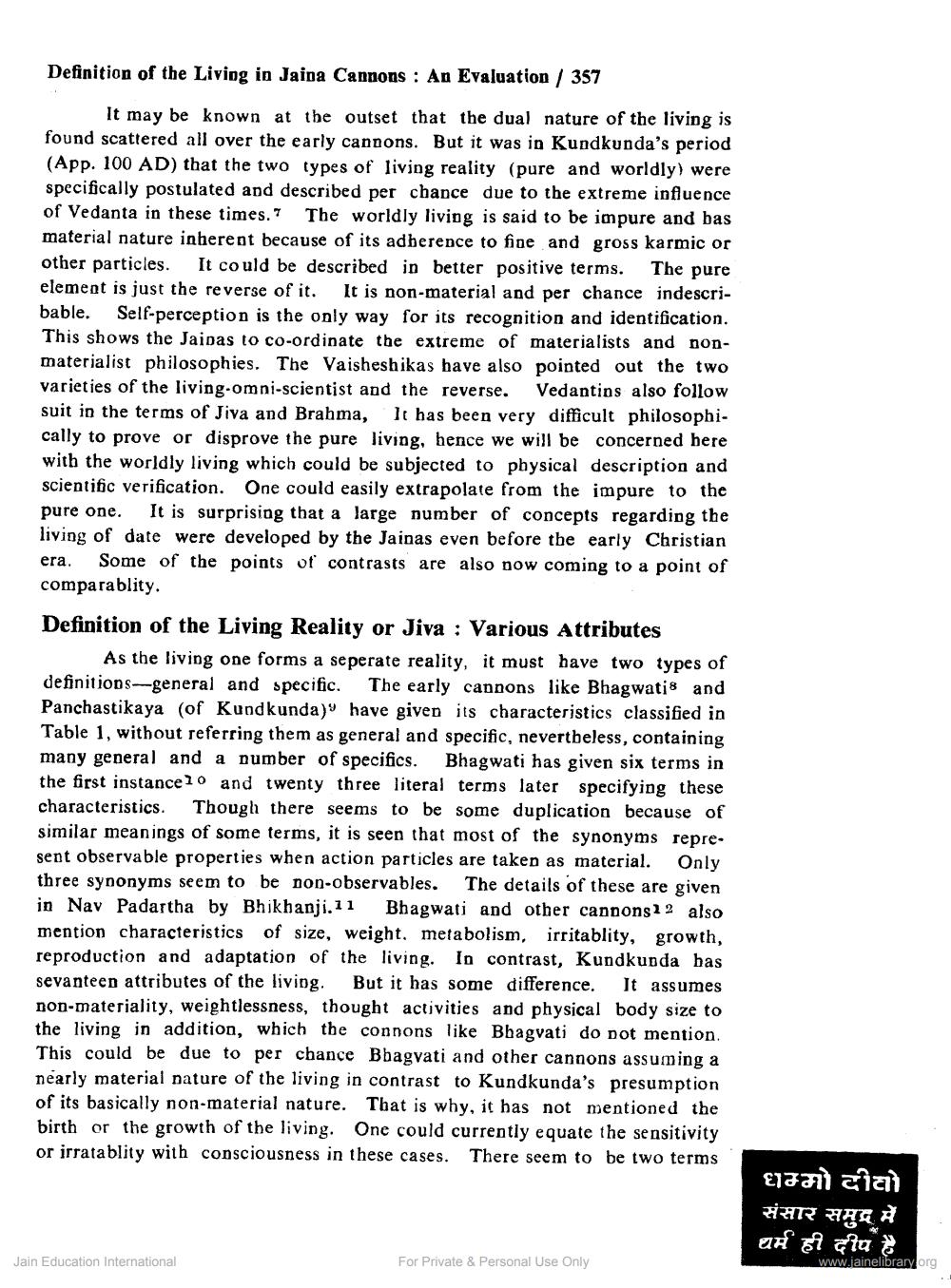Book Title: Defiition of Living in Jain Cannons An Evaluation Author(s): N L Jain Publisher: Z_Umravkunvarji_Diksha_Swarna_Jayanti_Smruti_Granth_012035.pdf View full book textPage 2
________________ Definition of the Living in Jaina Cannons: An Evaluation / 357 It may be known at the outset that the dual nature of the living is found scattered all over the early cannons. But it was in Kundkunda's period (App. 100 AD) that the two types of living reality (pure and worldly) were specifically postulated and described per chance due to the extreme influence of Vedanta in these times. The worldly living is said to be impure and bas material nature inherent because of its adherence to fine and gross karmic or other particles. It could be described in better positive terms. The pure element is just the reverse of it. It is non-material and per chance indescribable. Self-perception is the only way for its recognition and identification. This shows the Jainas to co-ordinate the extreme of materialists and nonmaterialist philosophies. The Vaisheshikas have also pointed out the two varieties of the living-omni-scientist and the reverse. Vedantins also follow suit in the terms of Jiva and Brahma, It has been very difficult philosophically to prove or disprove the pure living, hence we will be concerned here with the worldly living which could be subjected to physical description and scientific verification. One could easily extrapolate from the impure to the pure one. It is surprising that a large number of concepts regarding the living of date were developed by the Jainas even before the early Christian era. Some of the points of contrasts are also now coming to a point of comparablity. Definition of the Living Reality or Jiva: Various Attributes As the living one forms a seperate reality, it must have two types of definitions-general and specific. The early cannons like Bhagwatis and Panchastikaya (of Kundkunda) have given its characteristics classified in Table 1, without referring them as general and specific, nevertheless, containing many general and a number of specifics. Bhagwati has given six terms in the first instancelo and twenty three literal terms later specifying these characteristics. Though there seems to be some duplication because of similar meanings of some terms, it is seen that most of the synonyms represent observable properties when action particles are taken as material. Only three synonyms seem to be non-observables. The details of these are given in Nav Padartha by Bhikhanji,11 Bhagwati and other cannons12 also mention characteristics of size, weight. metabolism, irritablity, growth, reproduction and adaptation of the living. In contrast, Kundkunda has sevanteen attributes of the living. But it has some difference. It assumes non-materiality, weightlessness, thought activities and physical body size to the living in addition, which the connons like Bhagvati do not mention. This could be due to per chance Bhagvati and other cannons assuming a nearly material nature of the living in contrast to Kundkunda's presumption of its basically non-material nature. That is why, it has not mentioned the birth or the growth of the living. One could currently equate the sensitivity or irratablity with consciousness in these cases. There seem to be two terms Jain Education International For Private & Personal Use Only धम्मो दीवो संसार समुद्र में धर्म ही दीप है www.jainelibrary.orgPage Navigation
1 2 3 4 5 6 7 8 9 10 11 12 13 14 15 16 17 18 19
